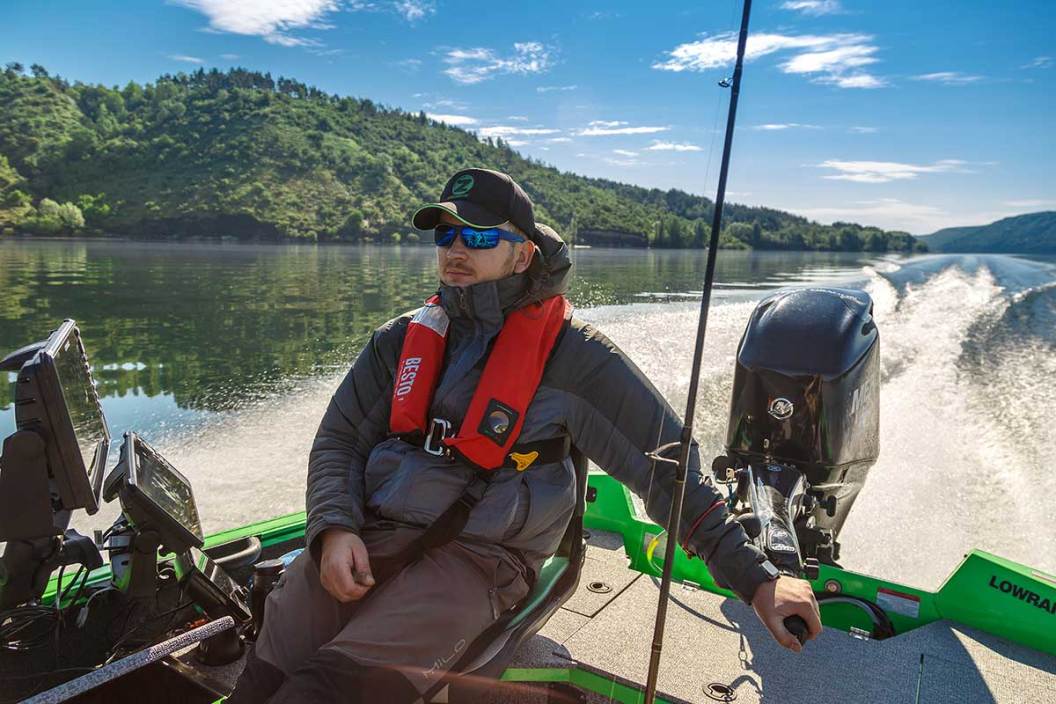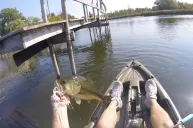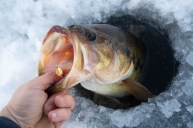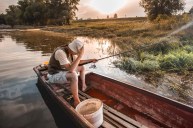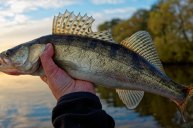Fishing summer cold fronts can be an exercise in futility, but it doesn't always have to be that way.
Most sources describe a cold front in weather-related terms as the leading edge of a cool mass of air, replacing a warmer mass of air close to ground level, in which lies within a fairly sharp surface trough. It's also what many of us describe as low pressure.
Okay, that's the library definition, but what does a cold front mean to you and I as anglers?
Once a cold front comes and then moves through, the signs aren't hard to miss: a notable chill in the air, sometimes followed by bright blue skies, and a small but obvious drop in water temperature. It would seem often enough that fishing after one of these weather situations can be difficult. But trust us, there's still hope.
Fish can and will bite once you've determined how to find and target them, but cold front fishing requires an open mind. Put away the aggressive bite lures like the spinnerbaits and topwater offerings, and instead think below the surface.
Beyond that, we've got a few hints that can aid your cold front fishing in the summer.
Make It Smell
Since post cold front fish will inspect baits with more scrutiny, then your offering needs to smell and taste real. If not, chances are they'll turn their nose up at it and disappear before you ever knew they were there in the first place.
Rely instead on baits infused with scent, like Berkley Gulp! or Powerbait with MaxScent. Berkley has even figured out how to impose scent in the skirts or their jigs, leaving you little excuse to fish with something that doesn't at least smell good, promising better odds of a strike and a good hook up.
A 1/8- to 3/8-ounce weighted jig for tempting bass and other species is fine, but you also need to get in right in their noses so they can get a sniff of what you are offering. Use electronics if you can to locate schools, or at least promising cover.
All that's left to do is hope that if they can smell it, they will eat it.
Live Bait
Speaking of smell, what catches a fish's eyes, nose, and mouth better than anything? Their actual favorite foods: crawdads, shiners, leeches, baitfish, and worms. Big, beautiful nightcrawlers can be a key to fishing a cold front.
You're still going to have to slow down, and of course find the right location. Again, good electronics are the order of the day for finding fish hangouts. Once you've put them on your radar, think about using some lighter fluorocarbon line that disappears in the water column.
Lighter, smaller hooks tied right onto the line work best for the same reason that scent does: you are going to need to get the bait right in their face, and you don't want to get busted trying to fool them.
Speaking of Light Line
For cold fronts, shy away from braid or heavy monofilament. Heavier line will stifle your lure's ability to be as natural as possible. Using the lightest line you can get away with in terms of the fish species you're targeting might mean taking a risk, but the bigger risk is getting skunked. Using fluorocarbon as a leader is a solid choice for fooling even the most line-shy walleye or bass, and if you weren't doing it anyway, now would be the time.
Since the fishing after a cold front can usually mean fishing in deeper water, you're going to have to give up some sensitivity for stealth and presentation. There are some braided lines out there that are getting thinner and thinner, which means it may be catching up. Use your best judgement to find the balance best suited for you and your fishing style.
Think Deep
If you don't have access to some good electronics, you may be searching a little more than the other guy. Don't sweat it. It shouldn't be all that hard to detect where the deeper water is in your favorite lake, reservoir, or impoundment especially if you've been fishing it for a while.
Cold fronts have the effect of pushing panfish, bass, and even walleye out of their favorite haunts to get some water over their heads. Since cold front conditions have little effect on those same deep water areas, fish will naturally gravitate to them to escape the change.
The best advice is to try the first deep weed edges that you know well, ideally near the shallow water you normally use. Off-shore humps, submerged points, and deep-water drop offs adjacent to the shallows are all key areas to target once a cold front has passed.
Structure, Structure, Structure
We search out fish-holding structure all the time, especially when we're bass fishing, but finding areas where fish scramble to in the event of a cold front is imperative. Pardon me from sounding like a broken record, but key locations are brush piles, rocks and sunken trees, as well as deep docks or bridge pilings all are locations where fish congregate in bad weather.
Finesse baits worked slowly are the name of the game here. Use smaller baits around this cover, working slowly and patiently. Slow-sinking, soft-plastic offerings will often be the key to getting bites when nothing else will.
Finesse Them
It depends some what you are targeting, but If you're fishing for largemouth bass, turn to drop-shots, Carolina rigs and shaky heads tipped with small versions of soft plastic baits such as worm, creature and minnow imitations.
I've personally had great luck catching crappie while suspending jerkbaits at this time using a stop-and-go retrieve technique. I sometimes leave the bait lying still for 30 seconds or more. Remember, the strike zone during a cold front will be smaller, and bass tend not to exert a great deal of energy or movement during post-frontal conditions. For walleye, slow to a stop on the retrieve to entice strikes when fish think that their target has given up.
Cold Front Confusion
Dropping barometer conditions and fluctuations in air pressure seem to affect most fish, but perhaps the largemouth bass most of all. As a front approaches, bass move shallow and become highly active, with the opposite being true after.
There are many theories as to why fish move in and out of deep water when the barometer falls, including the the swim-bladder stabilization theory. The thought on that one is that bass are moving deep to equalize swim-bladder pressure.
Anglers have a couple of choices at this time: give up and go home, or forget the annoyance of cold air temperatures and frigid fingers, and just go fishing. Catching bass, walleye, or anything else still hinges on your effort level and desire to get out there, even when the weather changes.
Once the front passes, even if the temperature drops, big fish will continue to feed. But you're going to have to work a little harder for them. You just have you ask yourself one question: Are you willing to stick it out for the chance to catch a big one?
Looking for a little more or even hot lunch for your hunting blind? Follow my webpage, or on Facebook and YouTube.
Products featured on Wide Open Spaces are independently selected by our editors. However, when you buy something through our links, we may earn a commission.
NEXT: SHED ANTLER ART CREATIONS THAT CAUGHT OUR EYE
